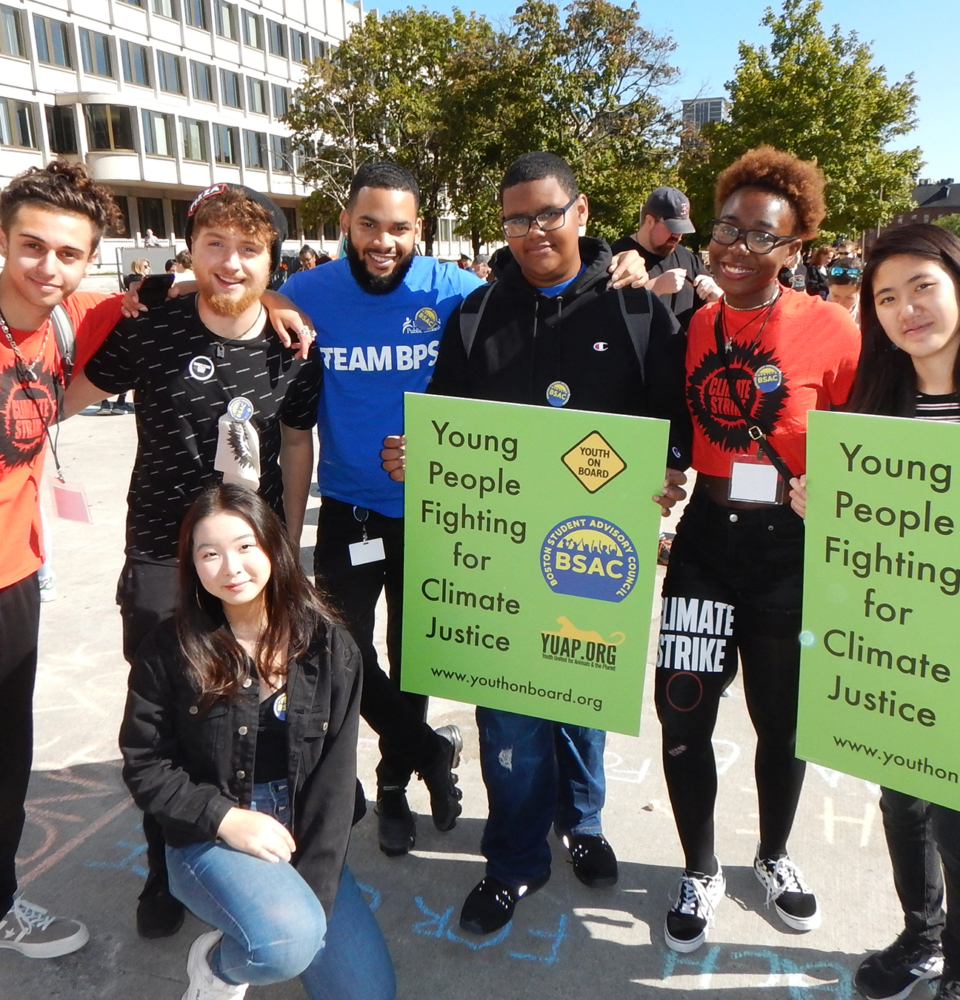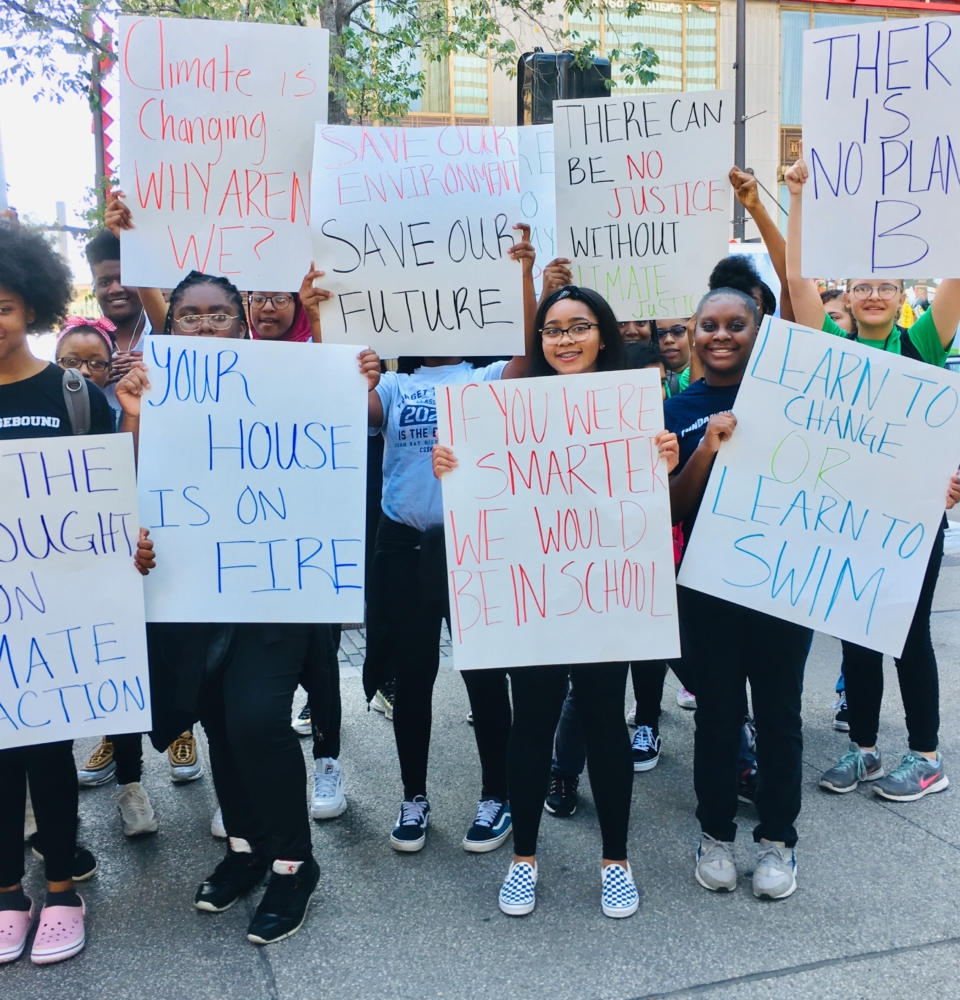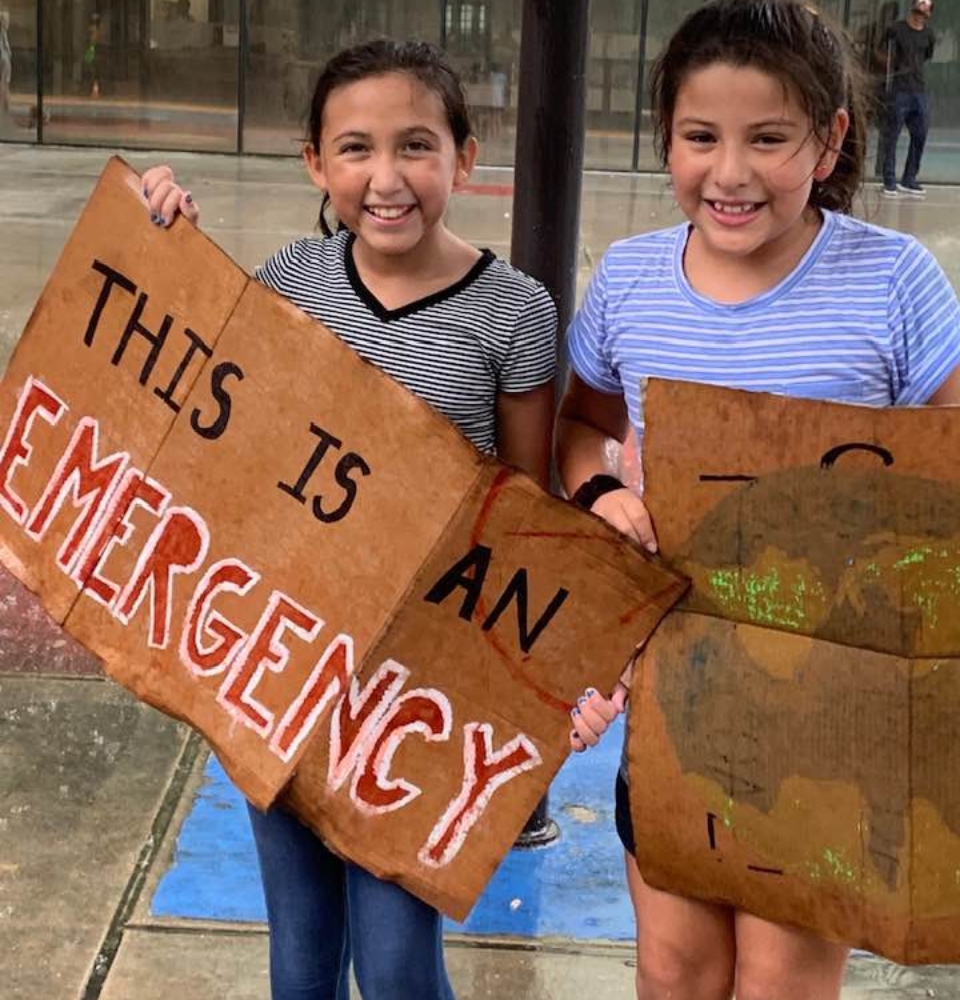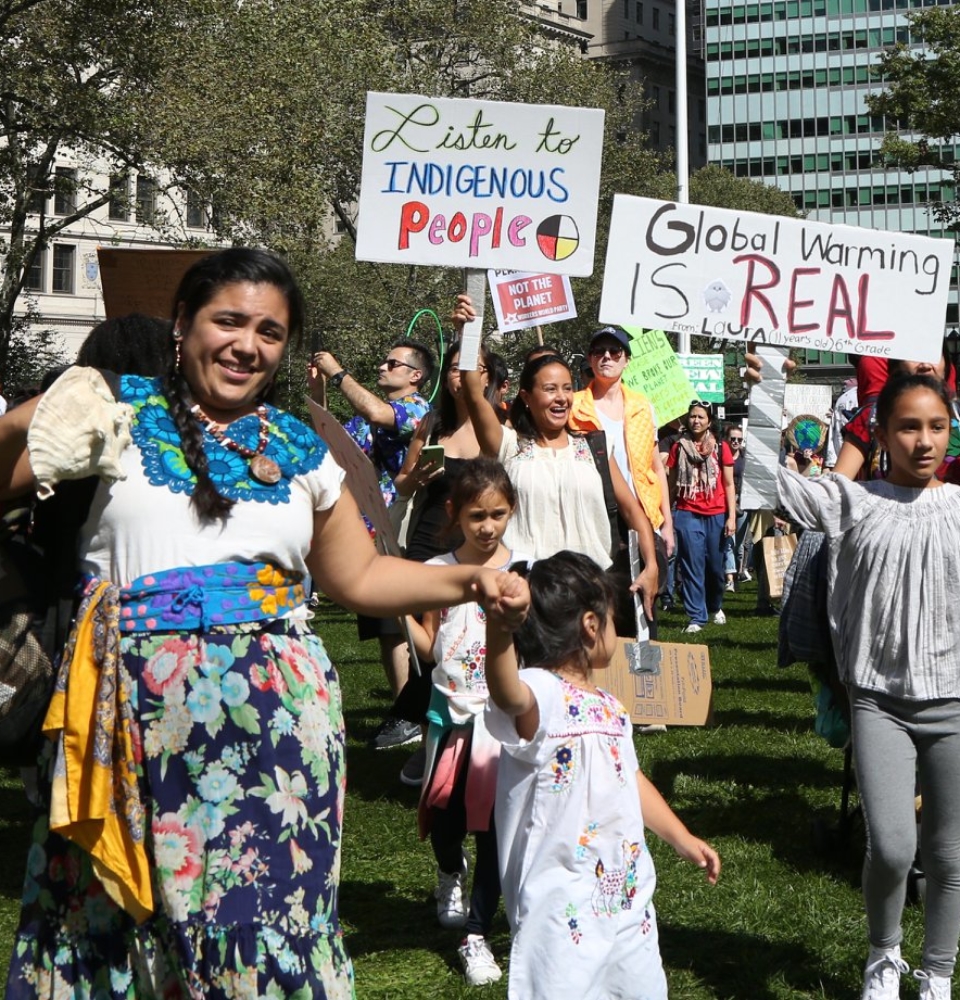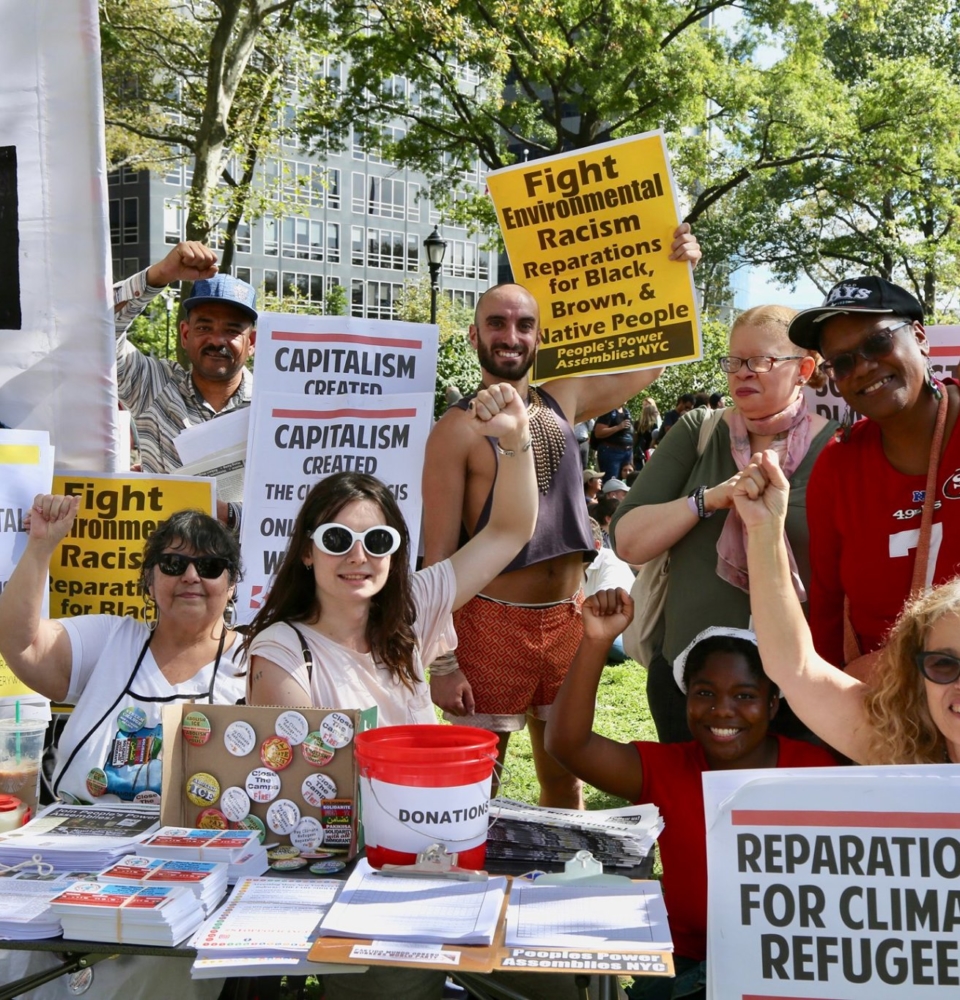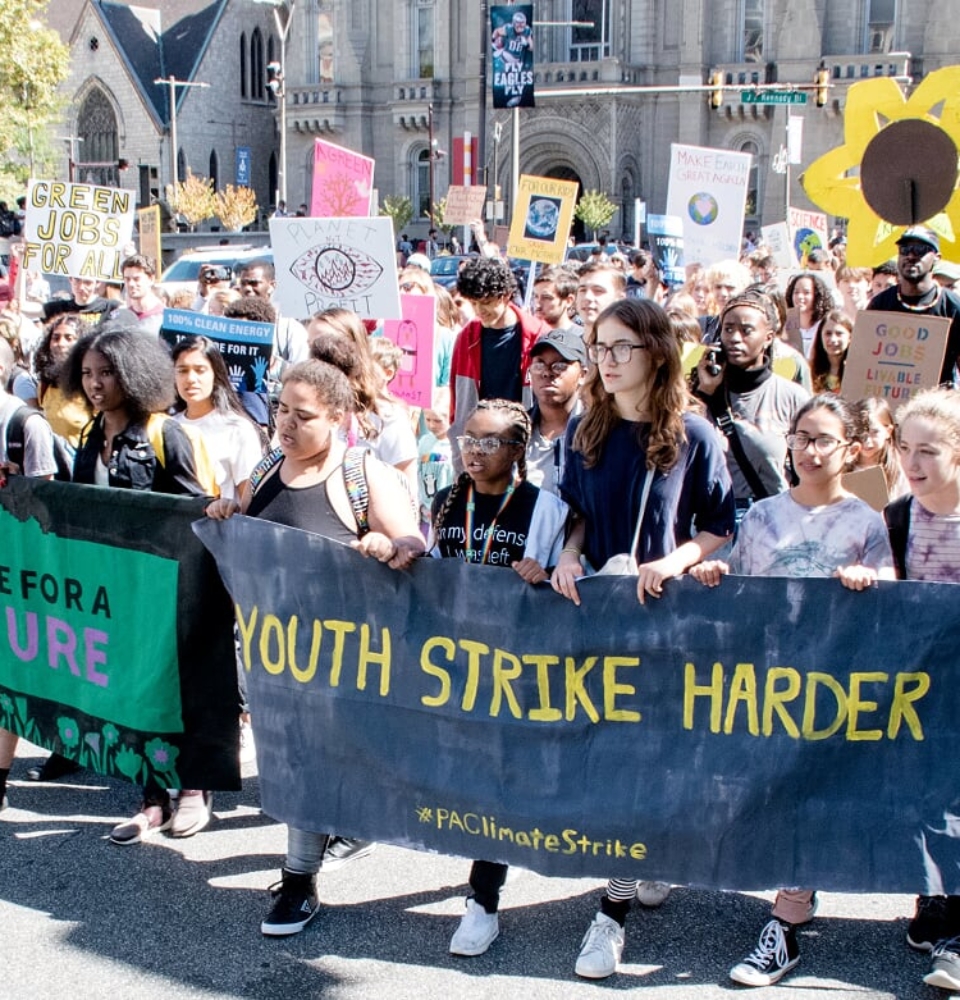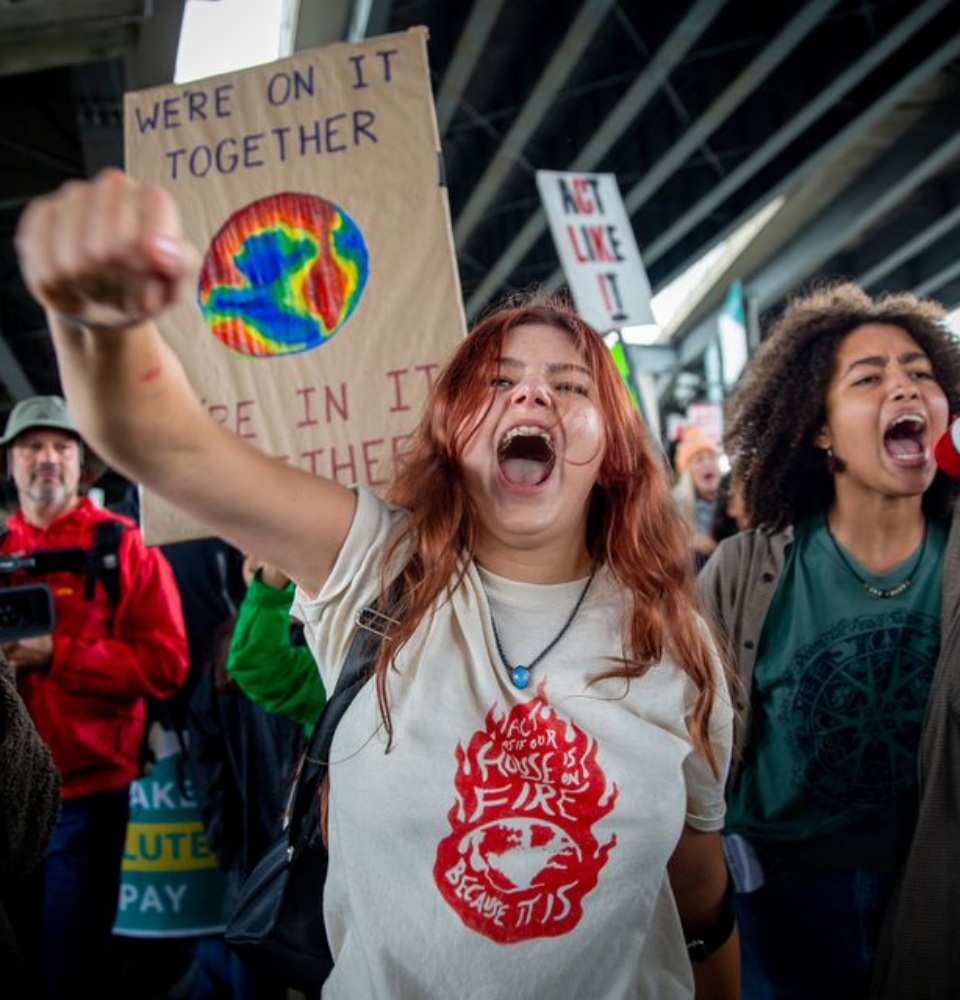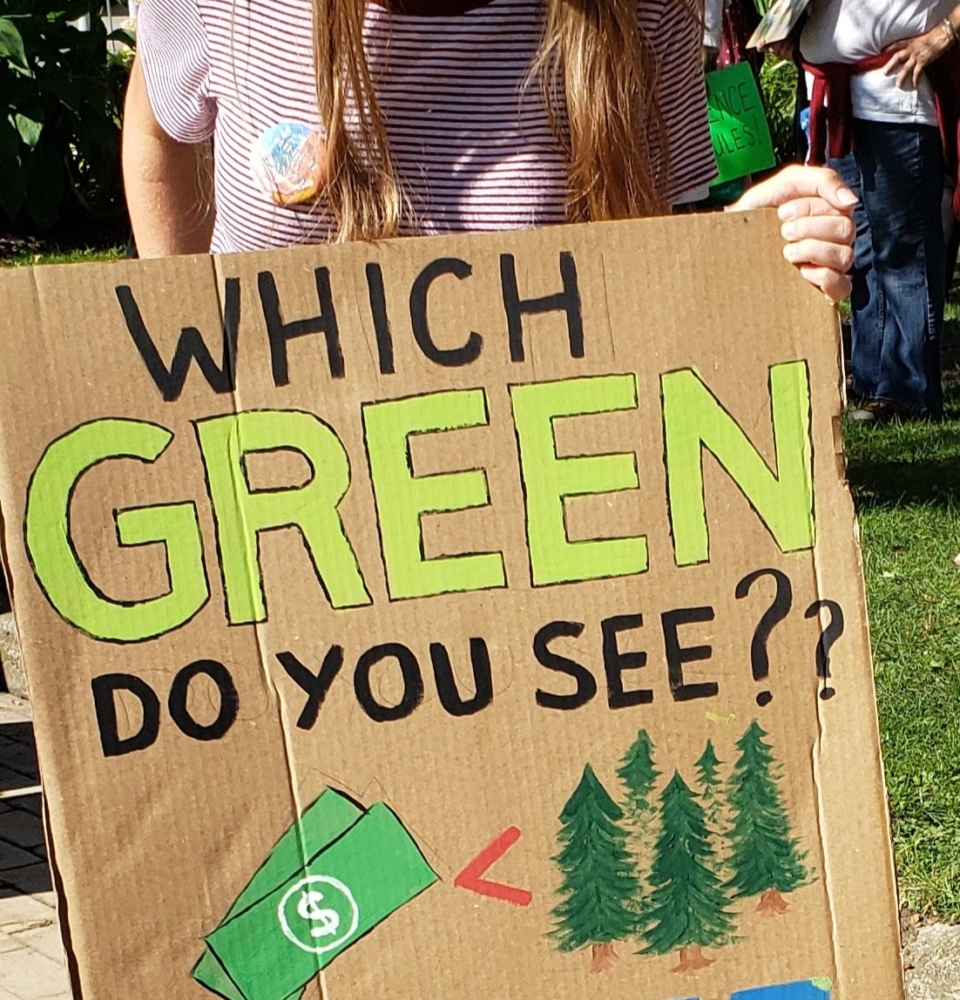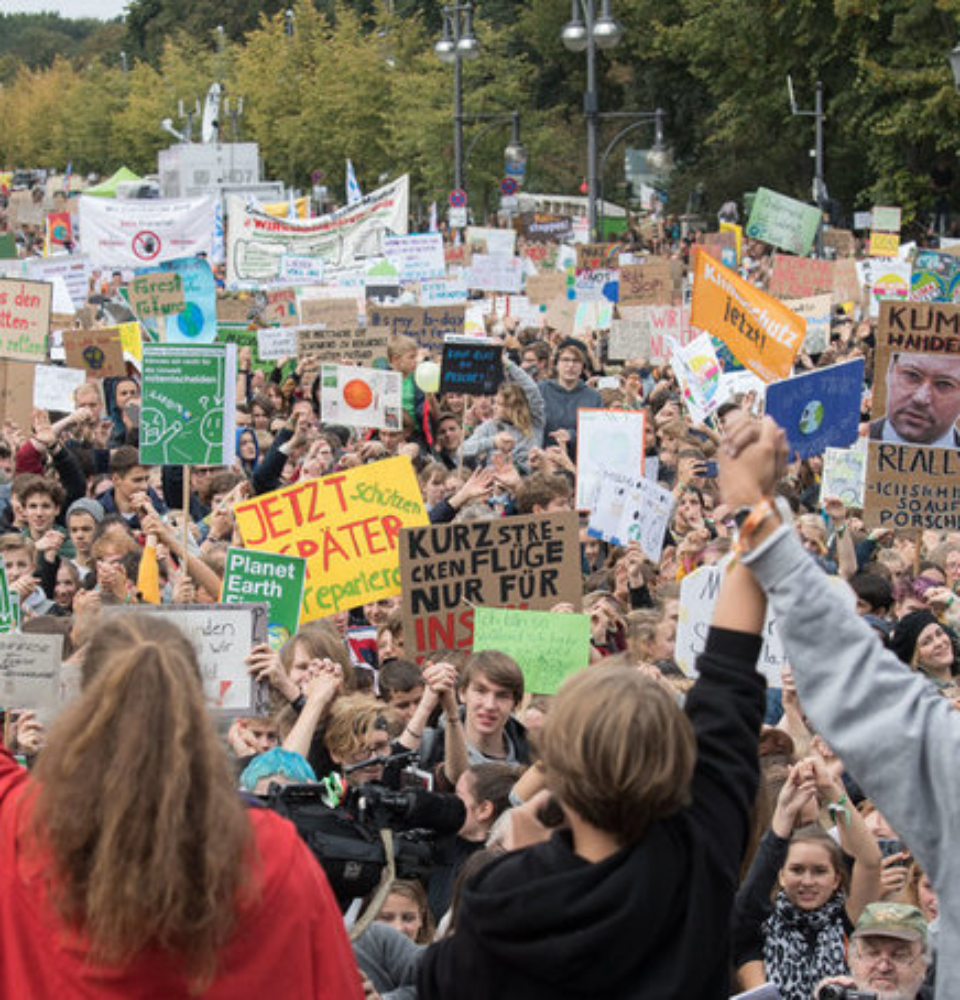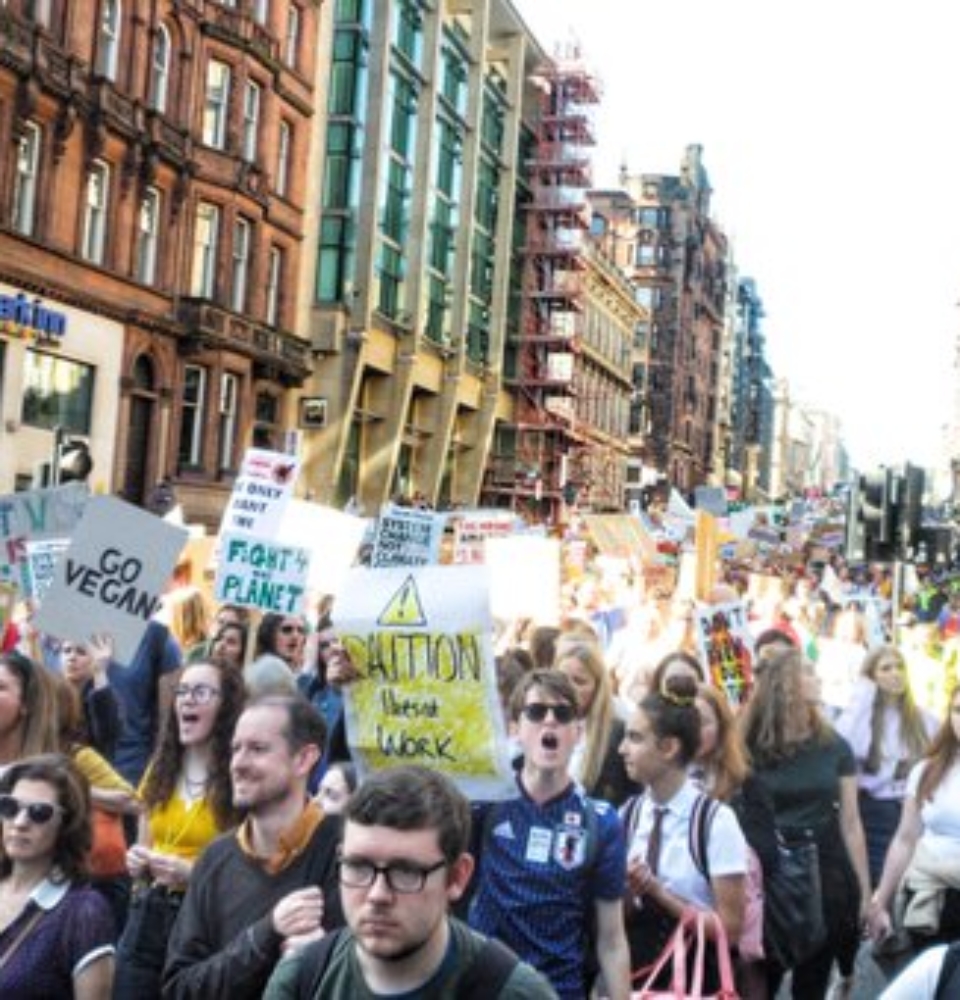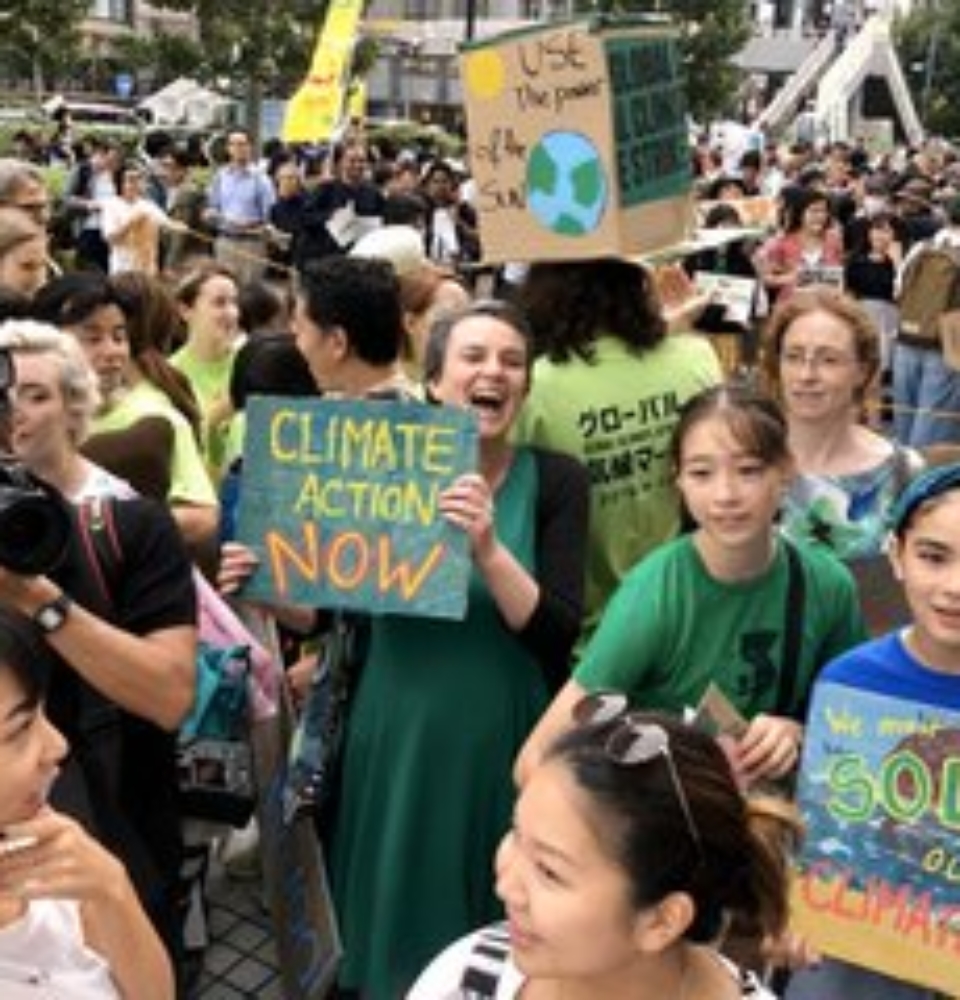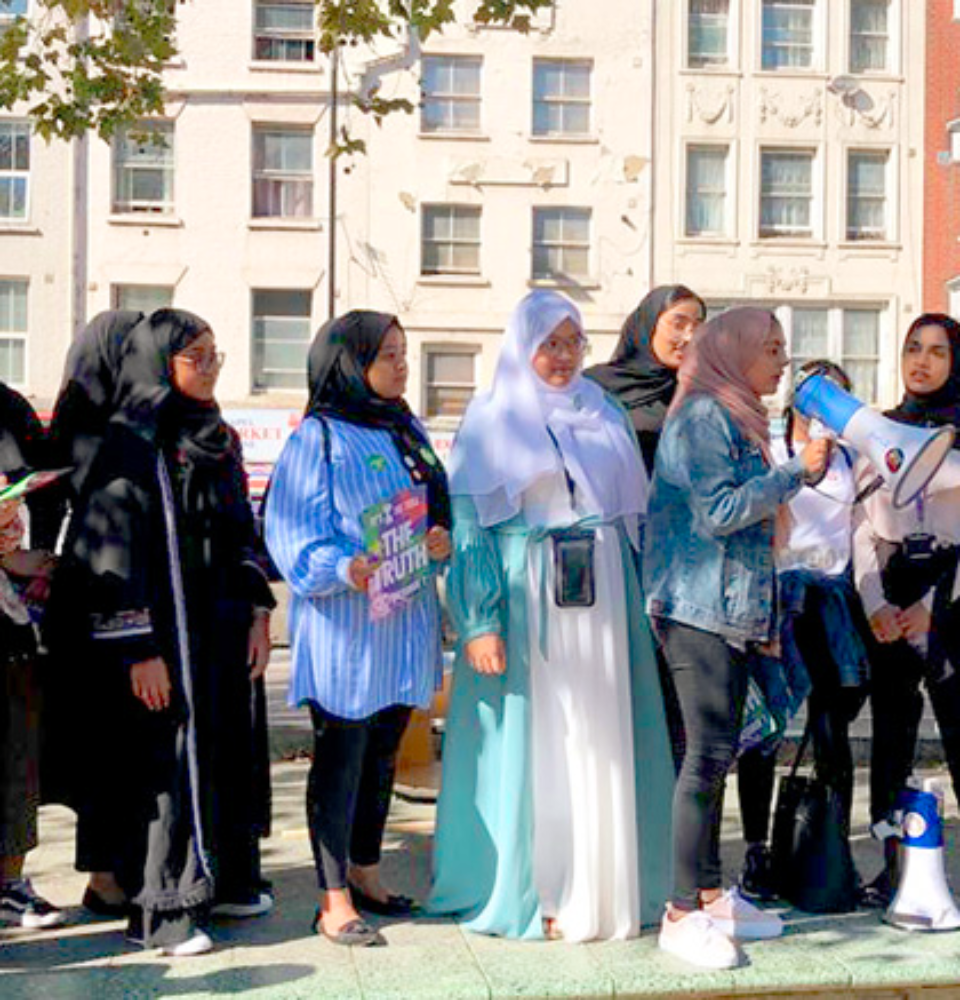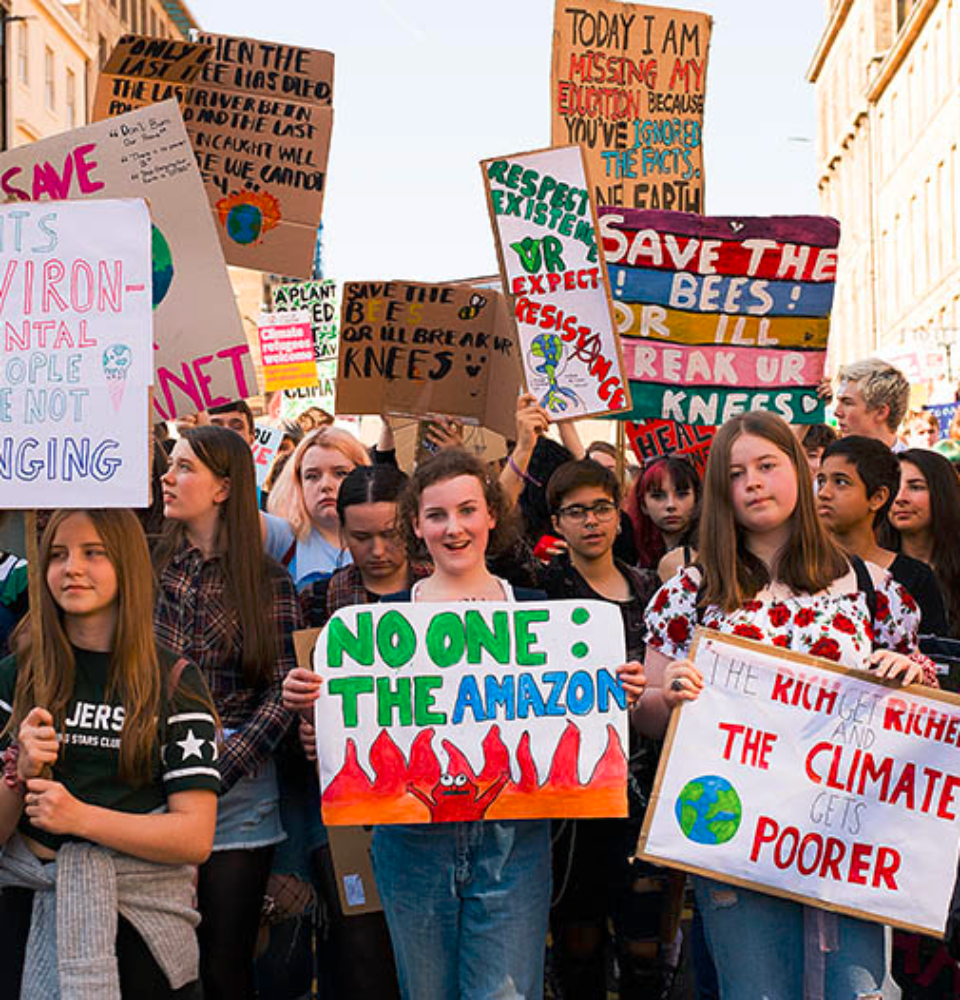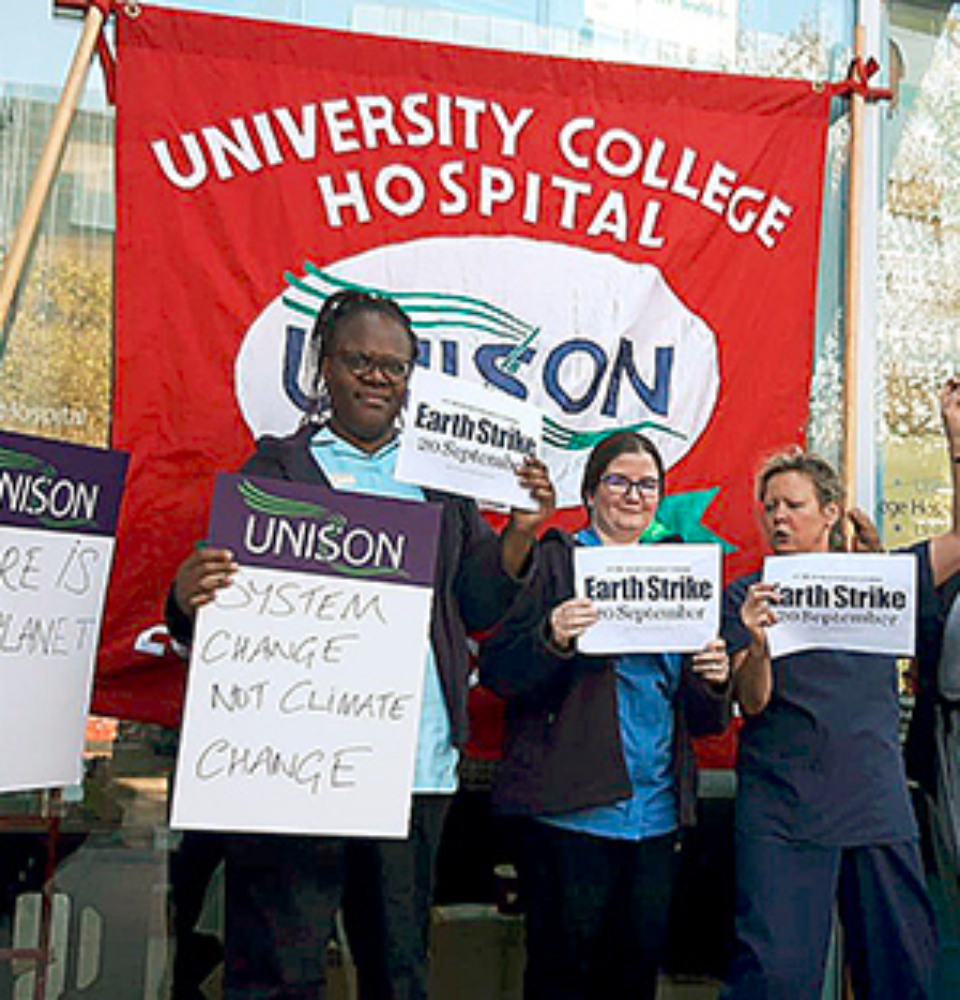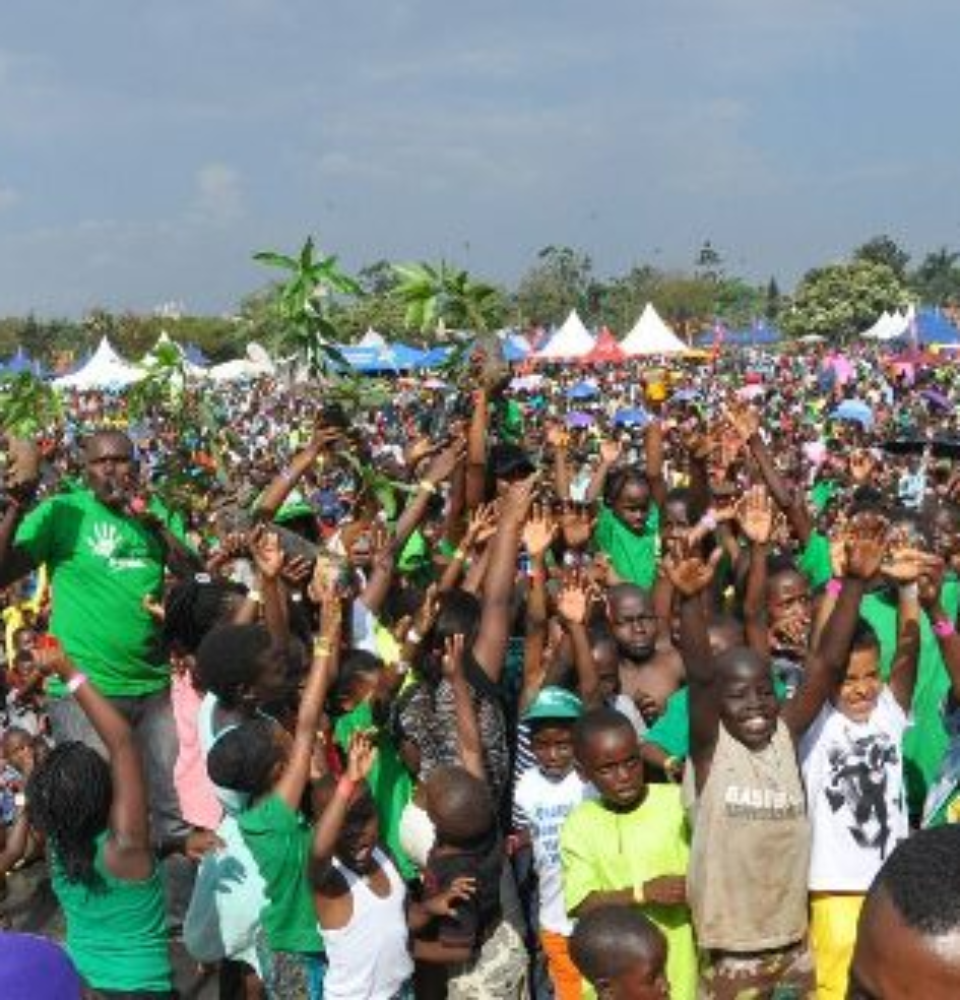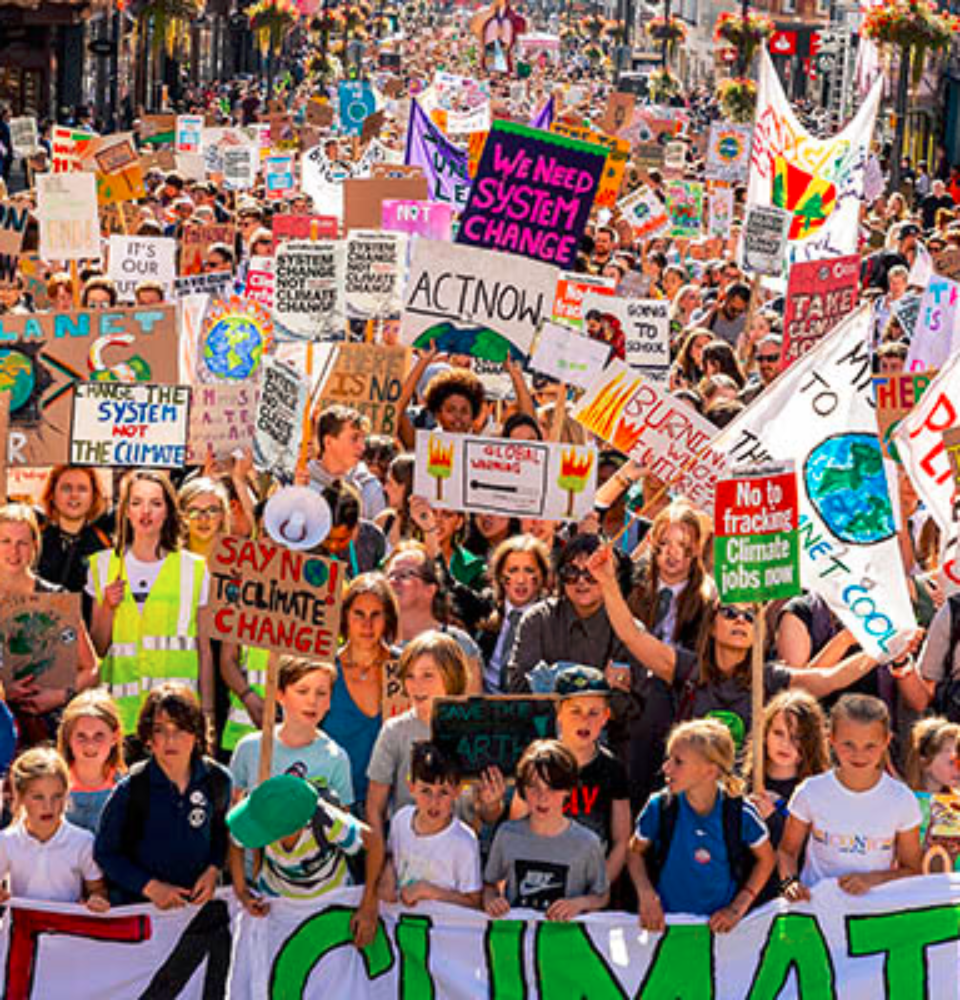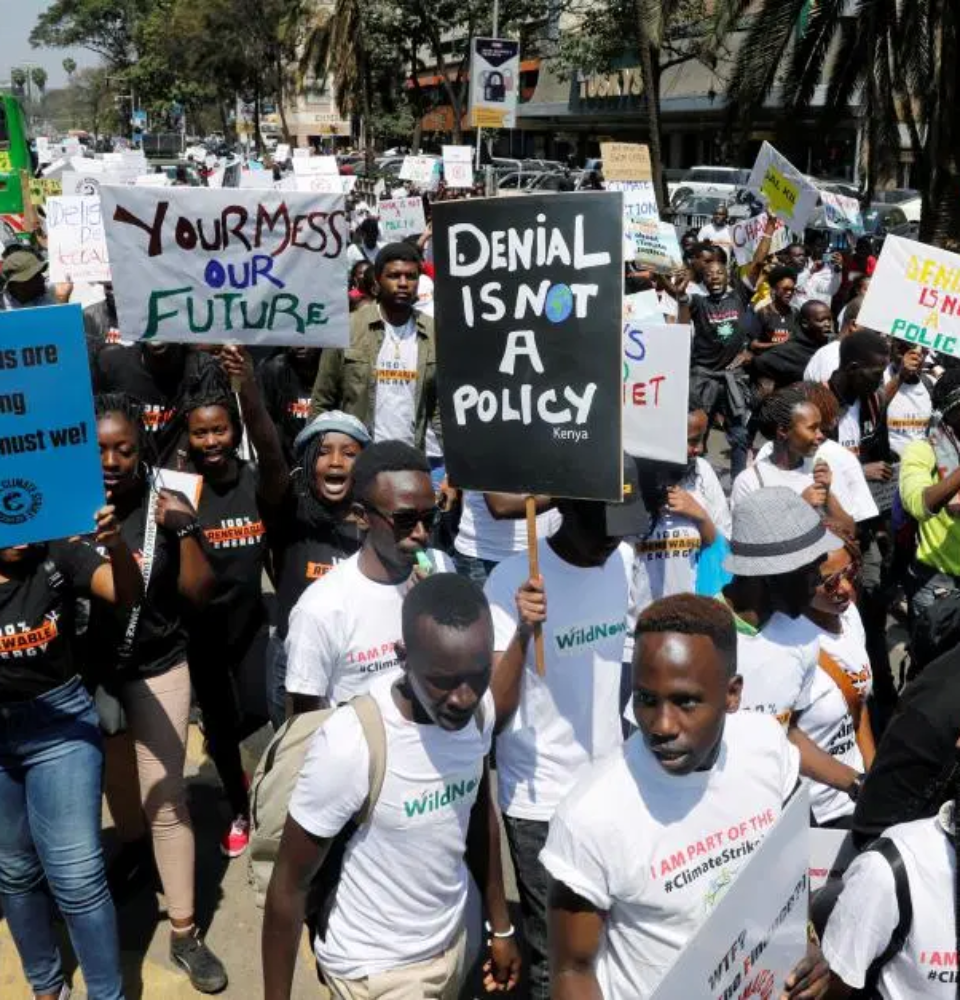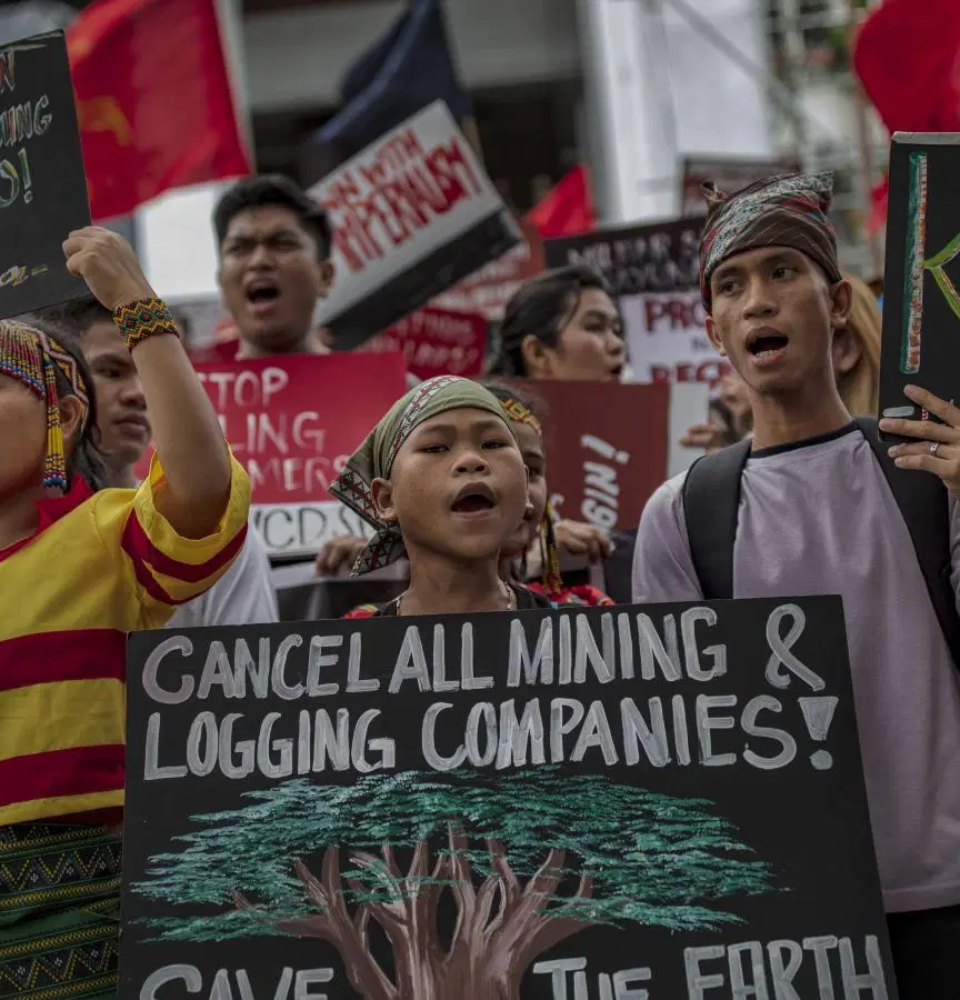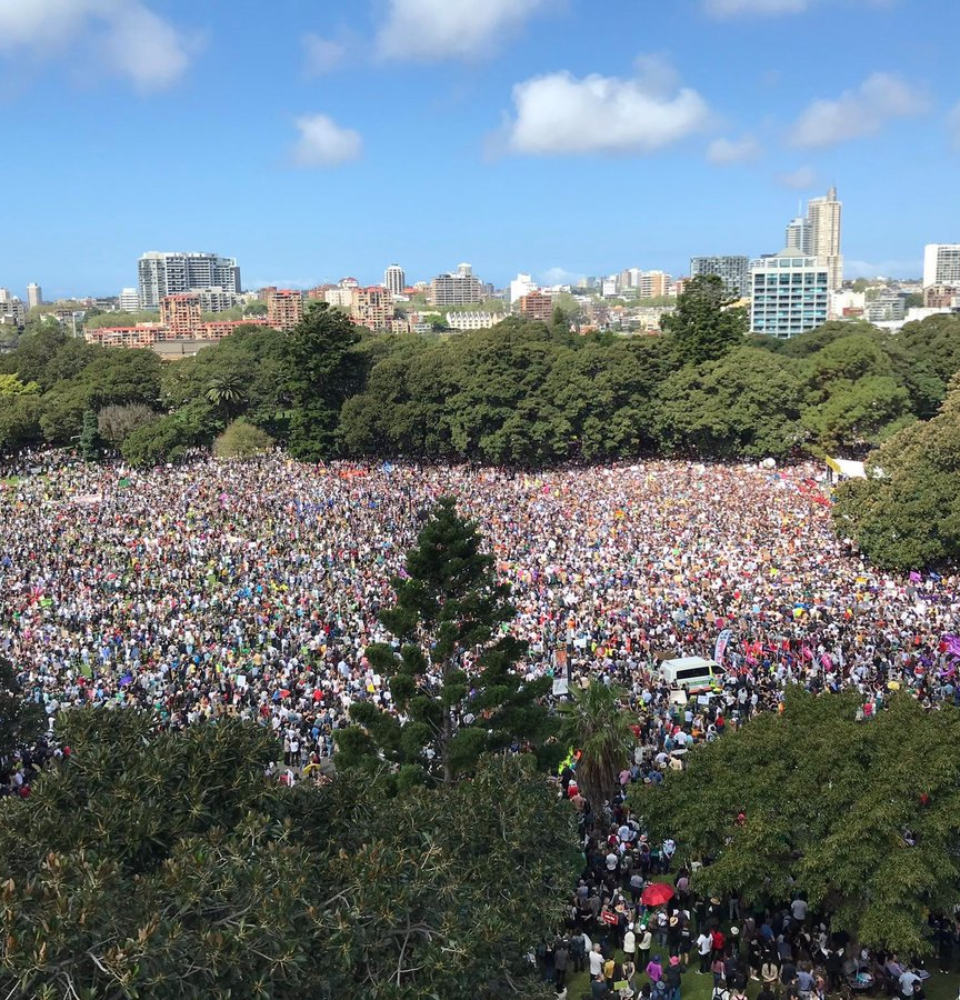Youth lead as millions say ‘Planet, not profits!’
Sept. 20 — Around the world today, it’s estimated that 4 million people took to the streets in an unprecedented Global Climate Strike, led for the most part by youth under 18. Many students walked out of school in unexcused absences, while others came with teachers or parents. Many young workers left their jobs to join in.
The day of global coordinated actions took place in over 185 countries starting in the South Pacific islands, through Australia, across Asia, Africa, into Europe and finally the Americas. Demonstrations took place on every continent and in every major city. The list is too long to enumerate here.
The Global Climate Strike was the third in a worldwide series of climate rallies organized by students in the last 12 months. September 20 may go down in history as the largest global demonstration in the fight against climate crisis — to date.
Australia reported its largest turnouts for social protests since anti-war demonstrations in 2003 preceding the U.S. war on Iraq. In the U.S. alone climate strikes were organized in over 1,000 cities — many reporting numbers from the hundreds to the tens of thousands or more. At least a quarter of a million people filled New York’s Foley Square, followed by a march to Battery Park.
Recent climate catastrophes — super hurricanes in the Bahamas and Puerto Rico, rapidly melting ice caps in Greenland and out-of-control fires in rainforests in the Amazon, Africa and Indonesia — certainly accelerated the turnout. Protests in the Solomon Islands and elsewhere in the South Pacific targeted rising sea levels which have wiped out entire communities. In South Africa, a major concern was toxic waste, in India air pollution and plastic waste, and in Australia coal expansion. (theguardian.com, Sept. 20)
The strike coincided with the start of the United Nations climate summit called in response to the urgency for government actions needed to restrict rising global temperatures.
The common factor in most of these actions was that leadership came from youth — students and workers — whose concern for their future is fueling this movement. In many cities children led the marches, in some cities even requesting that older activists take up the rear. The average age of participants in many protests was between 12 and 18 years.
Many young participants see the climate crisis and its threat to the future of the planet as the most important issue of their generation, along with the stark reality of extinction of countless nonhuman species.
Creative handmade signs read: “There is no planet B,” “Let the youth be heard,” “We can’t save the world by playing by the rules,” “You’ll die of old age, I’ll die from climate change.” And many said, “System change, not climate change.”
Fifteen-year-old A.J. Conermann, marching in Washington, D.C., put it simply: “I want to grow up. I want to have a future.” Also 15-year-old Marie-Lou Sahai skipped school in Paris to participate because “The only way to make people listen is to protest.” (AP, Sept. 21) Isha Venturi, a 15-year-old student at the protest in New York, said, “No matter how many times they try to ignore the issue, you can see every teenager in the area is here. … We’re not quiet anymore.” (NBCnews.com, Sept. 20)
Swedish teenager Greta Thunberg, the 16-year-old who is credited with starting the weekly climate change strikes and the hashtag #FridaysForFuture, addressed the demonstration in New York. She said, “We are united by science and we will do everything in our power to stop this crisis from getting worse, even if it means skipping school or work because this is more important. … Why should we study for a future that is being taken away from us? That is being stolen for profit.”
Thunberg is expected to participate in a U.N. Youth Climate Summit on Sept. 21 and speak at the U.N. Climate Action Summit with global leadership on Sept. 23. Thunberg addressed the U.S. Congress on Sept. 18.
Environmental struggle has evolved
The energy and diversity of this fledgling movement should not be underestimated. This is not your parents’ environmental movement.
Traditional leadership in the environmental movement has tried to contain it, limiting demands and making it more about “individual choices” over what food to eat and what products to buy. Yet the barrage of recent climate disasters and reports of rapid climate destruction have clearly propelled this movement way ahead of those who would seek to confine and contain it.
Speaking at a rally in Williamstown, Mass., 16-year-old Ruth Weaver addressed this. To resounding cheers she said, “Switching to a diva cup or buying a metal straw isn’t going to stop this. … The real planet killers at work here are the corporations, toxic waste dumped into water, trees cut, and water contaminated with lead. … This is not our fault but now it is our responsibility to take on these corporations.”
Anti-capitalist and pro-socialist slogans could be seen at many actions in cities across the U.S. Recognition that capitalism is at the root of the crisis and has no answers to solve it was evident, along with the understanding that socialist countries — Cuba, China and others — are offering up solutions.
At the Lower Manhattan rally, Workers World Party had a large, well-received banner that read: “System Change, Not Climate Change — Stop Capitalist Pollution with Socialist Revolution.” Signs seen at other protests included: “Our planet is choked by environmental racism,” “Save the planet, end capitalism,” and “It’s capitalism, not straws.” Youth were also open to the teachings of Marx, Lenin, Rosa Luxemburg, Malcolm X and other revolutionary thinkers.
Thousands of Portland, Ore., students packed the streets in a march that stretched nearly a mile. Some signs they carried read: “Don’t frack with Mother Nature,” “The solution to pollution is revolution,” “If you don’t act like adults, we will,” “There will be no solution under capitalism” and “Don’t burn my future.”
Reparations for climate refugees
The wide diversity of protesters, including ethnicity and nationality, was also evident. While young people were clearly the majority, the age range of demonstrators ran from under 8 to over 80. Participants included Indigenous people whose land has been colonized and ravaged by capitalism. In several cities speakers acknowledged that rallies were held on Indigenous lands.
Solidarity with im/migrants and against Immigration and Customs Enforcement was also expressed. The San Francisco rally of over 40,000 people stopped outside the ICE office and at banks, institutions and corporations fueling and benefiting from the climate crisis, including Amazon. In several cities FIRE (Fight for Im/migrants & Refugees Everywhere) brought signs calling for “Big Oil: Pay climate refugees reparations” and “Open the borders, justice for climate refugees.” In Atlanta, a sign read: “The wrong I.C.E. is melting.”
Tech workers strike in solidarity
As students walked out of their schools, thousands of tech workers from Microsoft, Amazon, Google, Facebook and Twitter staged walkouts — possibly the largest coordinated worker action in the history of the tech industry.
In Seattle, where 10,000 people marched, around 3,000 tech workers left their jobs to join the protests. Around 1,500 Amazon workers walked out and rallied along with 700 workers from Google, Facebook and Twitter; many brought their children.
In May, a climate justice resolution for an aggressive climate change plan, backed by 7,500 workers, was presented to Amazon stockholders who voted it down. This rejection, along with the call by youth for the Global Climate Strike, spurred Amazon workers to strike.
In 25 cities in 14 countries around the world, Amazon employees walked out to protest that company’s failure to do more about climate change. Twitter workers walked out in San Francisco to march with other tech workers from the payment firm Square. In San Jose, Facebook workers joined the climate strike. (theguardian.com, Sept. 20)
Climate strike actions in many cities saw contingents of union workers join in solidarity with student activists. In San Francisco teachers from the Bay Area teachers’ union accompanying their students on the climate demonstration defied a last-minute order from the superintendent of the San Francisco Unified School District withdrawing support for the strike by forbidding field trips to limit participation of younger students.
In New York City, a union contingent of 1199 Service Employees (SEIU), Communician Workers (CWA) and the Professional Staff Congress (PSC) followed the instructions of the youth to bring up the rear of the march from Foley Square to Battery Park.
Trust youth leadership
There will be liberal, pro-capitalist forces hoping to contain this movement — to steer it into the bourgeois elections, lobbying politicians, supporting reformist agendas — and those who seek to limit its message to what they consider “safe demands.” But the window of opportunity for that may be long gone.
What happened today marks the beginning stages of protracted struggles around this crisis that is certain to tie in with other issues, including environmental racism and the impact on the Global South. The energy and creativity of the young activists who participated in and led the climate demonstrations hold tremendous potential. This youth movement also holds the potential of helping longtime socialists form united fronts, despite varying political views.
While not all involved grasp that capitalism is at the center of the crisis and that its overthrow is the next step, this movement is wide open to eventually come to that realization. We should trust the youth to get there.

